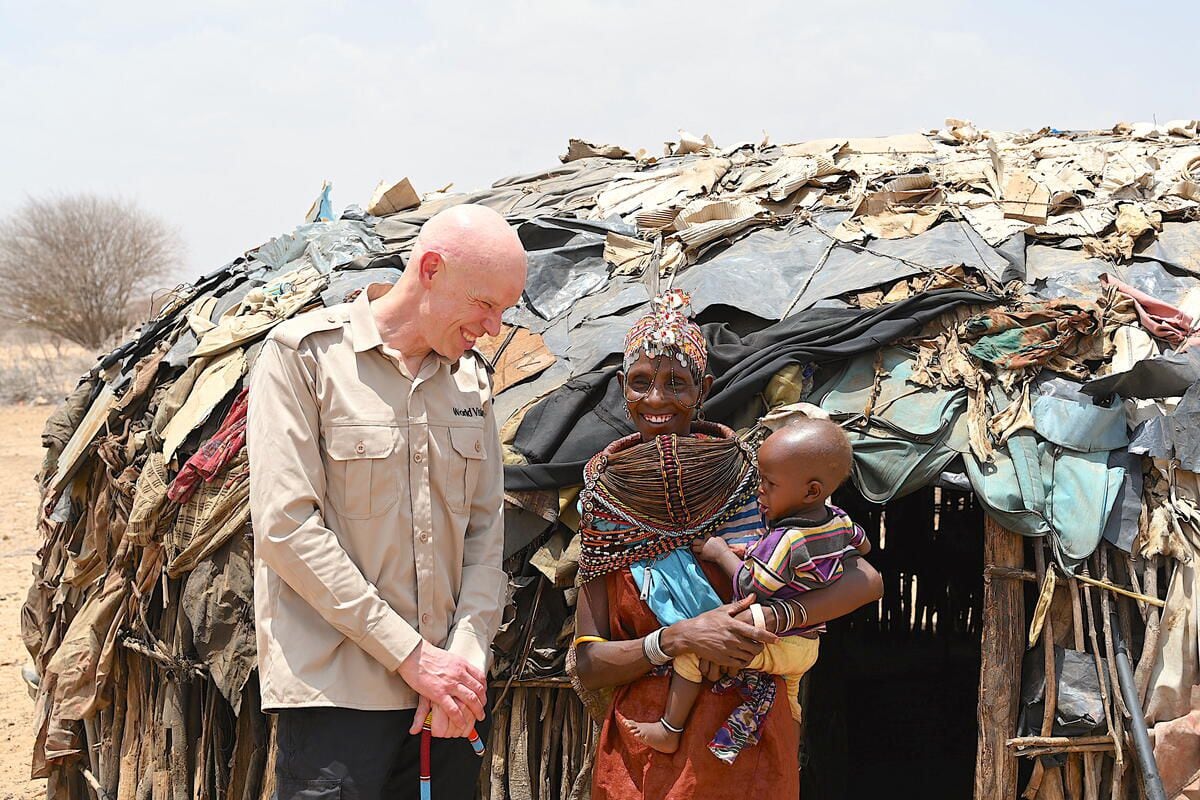For teenagers like 16-year-old Hannah, who lives in a dusty village where the borders of Kenya, Ethiopia and Somalia meet, the drought that devastates the area and the fatal shock waves it sends are too real to bear.
It hasn't rained in three seasons in her area and children, who should be safe at home or at school, walk miles in search of water.
It is not only about the immediate pain of thirst and hunger, but also about mothers having to check if their malnourished children are still breathing at night or children having to travel long distances to collect water from snake-infested wells.
The drought is tearing apart all aspects of life in the region, tearing apart an already fragile safety net for countless children and their families.
This rainless season comes after difficult years: another dry spell between 2017 and 2018 and a locust invasion in 2019. The socioeconomic impacts and the effects of covid-19 have also aggravated the situation.
Confronting hunger, child marriage, or both
On my recent visit to East Africa, I met Hannah, a studious teenager who dreams of becoming a doctor.
But the lack of rain means that her parents' cattle are dying.
In turn, this means that they cannot pay her school fees or provide for her family's basic needs, such as food.
Hannah fears that if she is taken out of school, she will be forced into marriage in the hope that a husband can afford to feed her better than her parents.
Unfortunately, one
research
of World Vision carried out in 2021 discovered that it is a perverse loop:
Hungry girls and boys are 60% more likely to be forced into marriage than their non-hungry peers, and those who are married are 60% more likely to go to bed hungry.
As I listened to Hannah's father talk about the seemingly insurmountable struggles he faces, he challenged me: “What would you do in this situation?”
That conversation doesn't let me sleep at night, as parents are forced to experience devastating situations, through no fault of their own, situations that no one should have to experience.
And as a father of two children, I don't know the answer.
What I do know is that our staff, some of whom come from the communities they serve and understand these nuances better than I ever will, do everything they can to fight hunger and provide much-needed hope.
Staff like Everlin, who works in Marsabit, northern Kenya, and is World Vision's child protection officer in the country.
She also grew up in a village to the north.
She often went hungry and received food aid herself.
She was about to be subjected to female genital mutilation and early marriage, but a missionary intervened.
Now, as I was able to verify, she helps other girls like her to defend her rights.
People are literally starving.
Humanitarian organizations estimate that
one person starves every four seconds right now.
The UN began tracking food prices almost two decades ago and, in recent months,
Hunger has skyrocketed to the highest levels ever recorded, according to World Bank data.
If access to food was dire before, the war in Ukraine has made the situation much worse: the number of people living in catastrophic conditions of starvation is four times higher today than it was just 15 months ago.
The impact of the conflict on the grain, fertilizer and fuel markets has skyrocketed the prices of food, raw materials and transport around the world, forcing
to cut rations for refugees and displaced persons.
The inhabitants of low-income countries that depend on these exports are the most affected, announced last June the
World Food Program.
Although food prices have fallen slightly since July, they are still at all-time highs, and the recent calm does not seem to be affecting people's pockets.
Even before the war, hunger had dramatically intensified around the world as a result of the covid-19 lockdowns, entrenched conflicts in many countries and the effects of climate change.
In 2021, there were 1.5 times more people at risk of famine than in 2019, before the pandemic, the World Health Organization reports.
In drought-stricken northern Kenya, I witnessed cattle carcasses littering the landscape and desperate herding families dividing their meager amounts of food between their children and their last animals.
Many organizations that provide food aid are faced with impossible decisions, with no alternative but to reduce the quantity, quality and frequency of food aid because there is simply not enough to go around.
Despite humanitarian funding at a record level, the need outstrips the support, and I am terrified that we will not be able to feed millions of hungry children and their families if this funding gap is not closed.
The challenge is great, but we know that we can avoid this crisis if we act now.
We just need the will to do it.
After all, the response to Ukraine has been a model of solidarity, with 66% of the total needs already funded, according to the
United Nations Office for the Coordination of Humanitarian Affairs.
It will be a moral failure if we don't make the same commitment to feed millions of the world's most vulnerable people and prevent girls like Hannah from being kicked out of school and forced into child marriage.
Andrew Morley
is president and CEO of World Vision International.
You can follow PLANETA FUTURO on
,
and
, and subscribe
here
to our 'newsletter'
.

